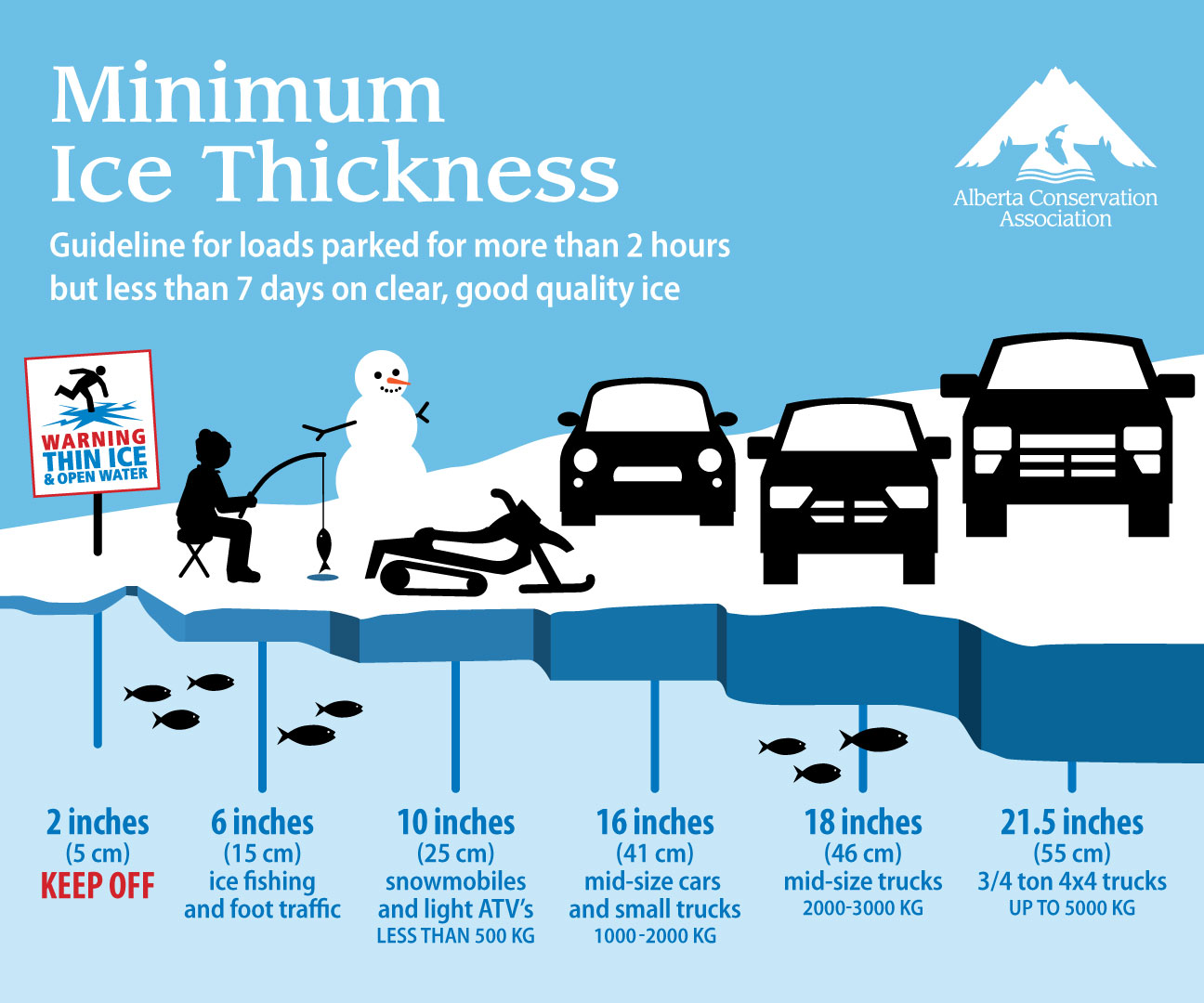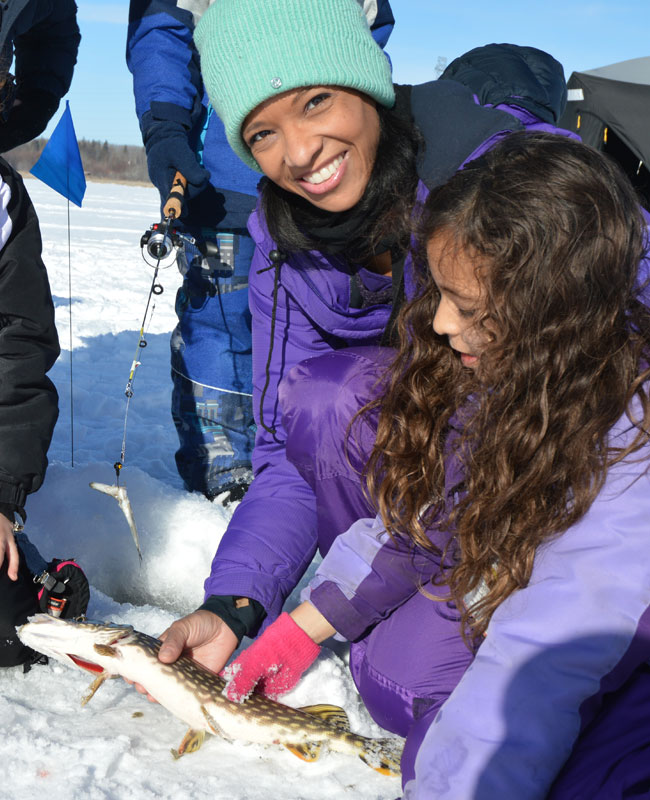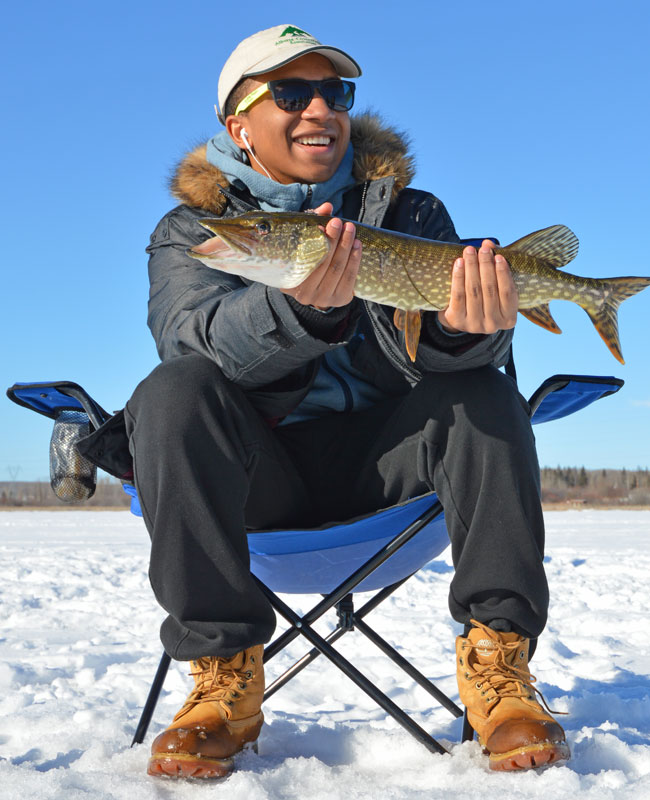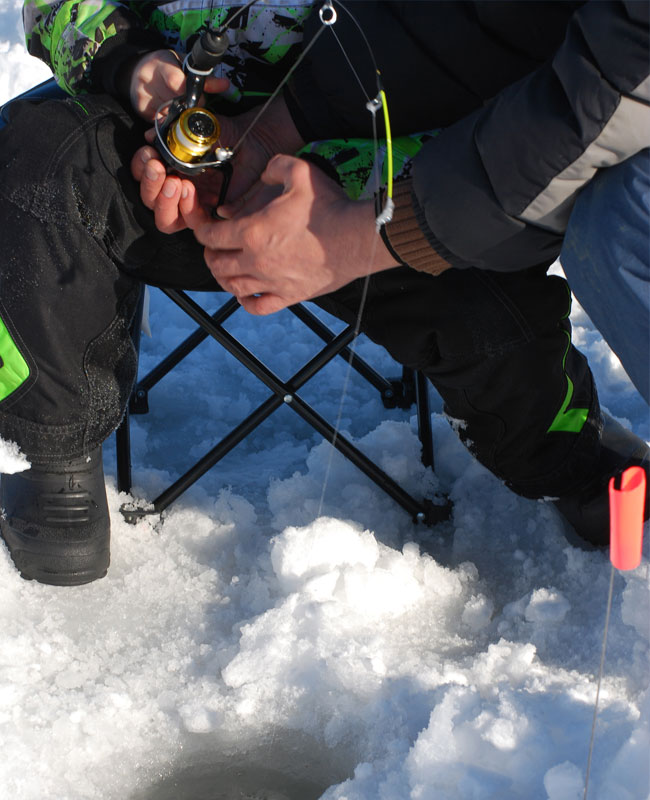Learn to Ice Fish
Looking for a great reason to get outside and have some fun in the winter? Ice fishing is a great activity for families and people of all ages. Whether you just feel like a casual adventure at a local lake, a luxury trip with tents, heaters, satellite TV, or hiking into a remote lake with a hand auger, there is an ice fishing adventure for all levels of skill and dedication.
This couldn't be easier. All you need to do is go to AlbertaRelm.com, click on "Create Account" (top right of the page), and fill out the form.
What is a WIN card?
A Wildlife Identification Number (WIN) is used by hunters and anglers in Alberta to purchase hunting and fishing licenses. The card is valid for five years and it used at the point-of-sale to confirm your eligibility for a license. Read the WIN card F.A.Q for more information.
Another easy one! Go to Alberta RELM and purchase a fishing licence. You can now legally fish in Alberta! If you are younger than 16 or older than 64, you don't need a licence to fish.
Make sure to familiarize yourself with the Alberta Fishing Regulations. Before heading out, check the regulations for the specific waterbody you plan to fish at.
Before you do any fishing, you are obviously going to need some equipment. If you are just starting, you can get away with just a jigging rod and some small spoons or bait and hooks. Bring some type of metal rod to break open previously drilled holes and be sure to have something to sit on. However we do strongly recommend a hand auger for drilling holes.
Here is a more thorough list of basic equipment.
Ice auger, something to sit on, skimmer (a scoop to remove ice and slush from the hole), jigging rod with 2-8 lb line (depending on the target fish), hooks, leaders (metal wire attached to the lure so the fish can’t bite off the line [needed for pike]), ice fishing tent, pliers (for removing hooks), food, wind-proof clothes and a big old plastic toboggan for hauling your gear across the ice.
An ice fishing tent and a heater can make the experience much better on cold days but is not required for success.
Many of our aerated lakes can be fished at during the winter. Check out our aerated lakes page to find a lake near you.
Take a look at the fishing regulations to find a lake that has what you are looking for in an ice fishing adventure. For example, Wabamun Lake has lots of big fish with frequent catch rates, but is catch and release only. Pigeon Lake and Lac Ste. Anne have decent whitefish populations and you can keep up to 10 whitefish. (Check the regulations before going out.)
We can’t stress about ice safety enough. Do some research online about ice thickness and weight and remember that even if the ice is thick enough, ice thickness can vary throughout the waterbody—perhaps there is a current from a stream that enters the waterbody, or gas bubbling up from the lake bed, both of which you can’t see but can drastically reduce ice thickness in a small area.
Although falling through the ice is a relatively rare event, having an ice rescue kit is never a bad idea.

Ice augers are typically pretty straightforward to use, but be careful as new ones can be very sharp. Although there are probably better spots to fish on every lake, there doesn’t seem to be much consistency when it comes to depth.
Every species of fish is different and are attracted to different lures and bait. Whitefish respond to wireworms (fake worms made from coloured wire), and small brass spoons. Pike and walleye will go for bait like worms or minnows, or larger spoons and lures. Most ice fishermen will tell you that bait is the best course of action. Ask around or research online the best way to get bites from your target fish.
The basic ice fishing technique is called jigging. Jigging is where you let the lure drop to the bottom, and then quickly pull the lure off the bottom and let it naturally sink back down, this is often when you will get a bite. You can also let the bait sink to the bottom, reel the line about two feet, then just let it sit there and let the bait do its job.
Don’t over-jig the line, gentle jigging is usually best. You should always be able to feel the weight of your lure, so if there is any extra weight (a fish bite), you can tell immediately. A 1-4 lb test line is usually best for smaller fish like whitefish, so you can feel anything on the other end of the line much easier.
If you are just on the ice for a fun day of catch and release, please remember to handle fish with care. For example, the layer of slime on the fish is an important barrier that prevents infections, too much handling can remove the slime and increase the fish’s chance of getting an infection. Please review My Wild Alberta’s webpage on proper fish handling techniques.


